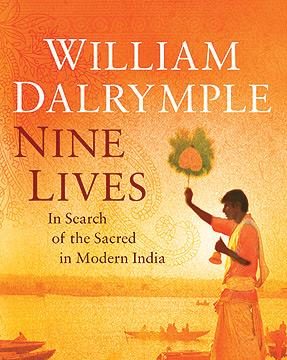This newest volume by William Dalrymple, who is known for his finely nuanced travel writing, took shape, says the author, when he travelled to Kedarnath many years ago and ran across a sanyasi who used to be a sales manager in a refrigerator company. Such a collision of the mundane and spiritual would be notable only to a person who hardly stepped out of Delhi, but to his credit Dalrymple goes well beyond simply marvelling at it. He mentions The Canterbury Tales in his introduction, and he names his nine chapters in that tradition, presenting in each an extraordinary person who has undertaken a spiritual quest. Having put each character in a narrative frame, the author promptly withdraws to the periphery, and most of the chapter is the untrammelled voice of that person.
A Jain nun in Shravanabelagola talks about renunciation and her deep attachment to her friend, an attachment that she must also renounce. A theyyam dancer is possessed by the goddess for two months in a year and for the rest works as a digger of wells and a prison guard. The songs of the theyyam challenge the particularly obdurate caste prejudices of Kerala, and the dancer Hari Das knows that as soon as he wipes off the red pigments from his skin, he will be treated as a lesser human. Devadasis of the Yellamma temple put on a brave front as they identify themselves sometimes as auspicious women and sometimes as whores. A hereditary singer of epics conjures up a hero and also heals the sick. He doesn’t perform solo, because “a man cannot recite Pabuji’s epic on his own.” As he completes one verse, his wife takes up the next one.
The history of Lal Peri of Sehwan, in rural Sindh, is more hectic; a lifelong search for refuge. She and other followers of Lal Shahbaz Qalander are outside the religious law, and their narratives foreshadow a clash between these lavishly emotional Sufis and the fanatic Wahhabis.
‘The Monk’s Tale’, Tashi Passang’s account of how he abandoned his vows of ahimsa to fight the Chinese, also wanders and sometimes descends to drivel. The tantric excesses of Manisha Ma Bhairavi, who cures skulls at a cremation ground in Tarapith, sit strangely in what Dalrymple represents as a cosy community of lunatics. Strangely, what animates her narrative are its strange flashes of ordinariness, as when she describes her father’s job in the Public Works Department. “He had a drum and a megaphone, and used to tell people when the water supply would be cut off and when it would be turned back on again.” The blind minstrel and his fellow Baul singers show another face of Tantric practices, breaking taboos but somehow never seeming as much “outside the law” as do the curers of skulls.
What moved me most, for subjective reasons undoubtedly, was ‘The Maker of Idols’, the narrative of Srikanda of Thanjavur, who casts the bronze images that are carried in temple processions. It is the chapter with the least “colour”, in terms of blood, sacrificed goats or skulls. The author sets the scene thus: “There are few places in the world where landscape and divinity are more closely linked than in southern India.” What this means is that religion is everywhere, worn on the face and on the feet, to the point where it becomes ordinary.
And yet, this world explodes with sensuality when Dalrymple describes the famed bronzes of the Cholas, which were created when the majestic gods of the temples needed to come to the doorsteps of their devotees. His framing narrative touches on the way Shiva nuzzles the back of Parvati’s naked shoulders and melds into the eroticism of spiritual Tamil poetry of that time. The transition is sublime.
Srikanda’s narrative is probably the most mundane, and of all the characters he seems least in thrall, even verging on irony. He is sorrowful but philosophical about the idea that he may be the last in his family to cast bronzes, since his son will study computer science. “As much as I might want otherwise,” he says, “I can hardly tell him this is the age of the bronze caster.”




